| Since February 2013, Intisar Abioto has worked on her ongoing photography project, The Black Portlanders. As a special feature for PDX Magazine, Abioto wrote expanded narratives for three of her subjects in this curated selection of her photos. Visit IntisarAbioto.com to view more of her work, and TheBlackPortlanders.com to view more photos of her project. |
Story and photos by Intisar Abioto
I am going to tell the truth: This is about adventure. For the past year, I’ve traversed the streets of Portland’s neighborhoods with my camera in hand, on a self-made journey to find, talk to, and photograph black Portlanders. This photographic journey has led me to document the many faces of the black and African diasporic presence in Portland. My sisters and I named this journey The Black Portlanders before I’d even began. The name was both specific and vague in its reference. It said something, but didn’t. That was important.
To date, the presentation has been straight-forward—photographs with a bit of information about the subjects published on our website, a Tumblr blog, and Facebook. The Black Portlanders offers a multitude of meanings to a host of people. Yet, by my own definition, at its most basic and powerful, The Black Portlanders is about celebrating, affirming, and imaging Portland’s black presence, simply because I want to and can. There needn’t be a reason to celebrate and affirm. On a very personal level, I do it because I love adventure, photography, arts, exploration. I love seeking the heart in the dream. I’m passionate about exploring the history, present, and future of the African diaspora. Fundamentally, I love talking to and photographing people, whatever their identity. The adventure goes on and on. It both can and will. Beyond this particular medium, adventure is my chosen art form.
As a storyteller, I am writing not only to tell the truth but to create it. This often means rewriting—or imaging—the words and meanings that hang in the air between us. “Black people” in Portland are so often a serious subject. So much of the conversation surrounding us is grounded in ongoing seriousness. Indeed, there are very serious issues concerning the history and present of people of African descent in America, and in our specific geography—but there is more here. I can’t help but feel the limitations of this lived narrative viscerally and profoundly.
So much of the conversation concerning Portland and its black residents mentions under representation in a largely white city. While this notion is supported by statistics—population figures place black Oregonians at 1.8 percent and black Portlanders at 6 percent of the total population—speaking about these numbers is hardly the primary meaning or intention of The Black Portlanders. If you are looking to know what The Black Portlanders is about, look at the images. If there are words, read them. Find out for yourself. Venture out with your mind. Be affected. I can’t tell anyone how to discern a meaning or interpret a story. That’s not the art. We are happening now.
Some may or may not know that Oregon’s 1857 constitution had an exclusion clause making it illegal for people of African descent to move to, reside in, or own property in Oregon. This law wasn’t repealed until 1926. We were literally written out of Oregon’s constitution. This is serious. Oregon has a troubled history of state-sanctioned discrimination against people of color. This is serious. Portland’s black geographic communities have been razed, moved, and displaced intergenerationally, leading up to the present day—most recently through gentrification. To interpret this, the land—or rather the money that is made from the land—has consistently been valued more than the people themselves, their lives, and certainly their communities. This is very serious.
This is an origin story of Oregon, but in my mind it is not the most important story by any means.
I aim to impart that the story, and the history of people of African descent, has often been tragically simplified for any number of reasons. That seriousness falls short in comparison to the power in the complexity of our presence and existence. The seriousness is one viewpoint, and in isolation, it is a reduction. The most relevant reality—the most relevant point of power is always the people, the faces, the presence, the lives. The story is the hearts, the faces, and the dreams. The importance is who we are and who we will be, in our multiple complexities. There is an opening and a flowering within that story that even I cannot explain. That flowering is who we are without definition or prescription. I am a photographer, making myself a witness. I could not tell you nor would I want to tell you what The Black Portlanders means, what the people mean. To put it plainly, Oregon’s origin story is not the origin or subject of The Black Portlanders, even as it references it. In our own occasioning, we supersede both history and time. We are the primary aspect and element, our plurality. We are not secondary or tertiary. We move and inhabit past the common story told, retold, and rewound back into reality. We, who we all are, is the most important element here. That is the beginning of the story. Begin here—go anywhere. You are in it too.
I am an explorer. I’ll be rounding up this wandering road all my life, this story or another—this geography or another. This love. Or another. Story is a way of traveling—chasing the image to light upon the truest tale within. The love in that, I’ll keep finding it. That’s my story.
These images? Right now? This city? You? Meaning?
Black Portlanders? They can speak for themselves.
Ural Thomas
“My kids don’t even know what I had to go through, in my generation’s time,” says Ural Thomas, seated in the living room of his family’s home in North Portland. “But I know the things that my mother and my grandmother went through…There was so much knowledge that they both had.”
Ural is one of Portland’s living, breathing carriers and couriers of soul. A Portland native, Ural made a name for himself as a youth by performing with The Monterays before setting off on his own musical journey. Ural has performed across the United States, at the Apollo Theater, and on stage with Otis Redding, Mick Jagger, and The BarKays before settling back in Portland.
Ural’s voice is knowing, yet caring in its curiosity—the edges of his words curve softly, warmly while his ideas and stories are specific, clear. It’s a distinction heard in the soft “Babe” that settles down at the ends of some of his sentences. When he speaks about his family, about the generations of women who raised him, his love and the specificity of attention in his voice is most apparent.
“We didn’t go to no doctors. And when my mama passed away—she was in her late 90s—she still had all her teeth. That was the kind of health and stuff that was just knowledge,” shares Ural.
“They used baking soda to brush their teeth. Baking soda and salt. If you had a rash, they’d use herbs and stuff. I guess some of it will be preserved, because they wrote some books. But the real stuff about the families doing their own creations and medicines…and love. That was the real thing to me.”
Ural has always surrounded himself with folks older than him. When he was in the eighth grade he ran with a group of men in their 40s. “They taught me how to steal, how to survive,” says Ural. “They taught me about music.”
While the grown men of his childhood taught him about his music, these intergenerational stories influence his music as well. “My mom was telling me about these two young black men. They didn’t want to stay on the plantation no more. So they took off running to get away. And they turned the hounds on them…I put all that stuff in [my songs] to kind of tell the story.”
In addition, Ural will channel his grandfather in an upcoming body of work through which he documents the stories that his grandfather told him as a child. The collection of songs is meant to performed on stage, a departure from what Ural has done previously and what he’s seen others do. It will be “acted out, and you don’t have to have too many real props, because you’re actually telling real stories. When you get to something exciting, you go Dunh Dunh,” explains Ural. “The rhythm still goes though, so people can dance to it if they want to. The rhythm stays in the tight line.”
Today Ural fronts Ural Thomas and The Pain. He performs with Portland musicians of a younger generation but whose musical intuition, passion, and knowledge melds perfectly with his own.“ When I was first in the world of entertainment, they’d make fun of me. They’d say, ‘You’re way ahead of your time,’” recounts Ural. “Now the things the kids are doing, is the stuff that I was doing then,” he says of his new band. “We found out we were on the same page musically. I told them, I just feel so lucky to get a second chance in life with a bunch of people who really love music.”
At 73, Ural is self-defined. He still seeks creativity and to create. Bridging time periods, experiences, and intergenerational lessons, Ural is as inquisitive, hopeful, and peaceful as ever. “I believe everybody’s a part of me,” says Ural, “so if I got something to share with you, we should share it.”
Vondell Swain
“The experience of being mixed race and not really knowing where you fit in is one of the things that drives my search for an identity,” says Vondell quietly. He is young, with a gentle smile and a mass of hair atop his head. This mass of hair is the result of an atypical mohawk, indicative of Vondell’s predilection for pushing already-stretched boundaries. He wears a mustache and goatee but allows a few patches of hair to grow on his cheeks, revealing his lack of five o’clock shadow—and his youth. But he has a sage air about him, most likely influenced by his ongoing self-analysis and desire for perspective. “It’s hard as someone who is black mixed race, that was essentially raised and socialized as a white kid. It’s interesting to come out of that and try to navigate identity that fits in with your activism, that fits in with your politics, and that fits in with your idea of yourself and others’ idea of yourself.”
Originally from Dayton, Ohio, Vondell first came to Portland in 2012 to attend Pacific Northwest College of Art. He didn’t stay at the school for long. At 20, Vondell is crafting a life as a successful illustrator and animator. Vondell sees social media as a vital aspect of his evolution as an artist. “A lot of people get down on social media activism, because it’s like, ‘Oh, you’re just sitting at home and just clicking buttons and sharing things. Maybe if that’s the only thing you do, then it’s something, but as a medium itself, it’s so powerful.”
He also sees social media activism as an aspect of his own evolving search for identity and growth. “As a 20-year-old, that’s what I can do right now. That’s not all I ever want to do,” he concedes, “but while I’m learning … figuring out my own identity and my own thing, the best thing I can do right now is to also be on the side, to the best of my abilities, of all these people coming through me. I’m helping, I’m contributing to all these other people’s voices who are already there, who already have a message they need to send. It’s one thing I can do. And it’s done a little bit of good.”
Vondell has most recently channeled his search for representation and identity into illustrations of Harry Potter, from the unique lens of Harry Potter as a black, mixed-race kid. “I’ve been rereading Harry Potter and I realized that his race in the books was never defined. It was never defined except to say that he has startling green eyes and jet-black uncontrollable hair. And to me, what I read into that was that he’s a mixed kid.”
The illustrations proved popular, striking a chord both inside and outside his social media audience, prompting a host of responses. “It took off because so many people were like, ‘Oh my God, Harry Potter could easily be a black, mixed-race hero story.’ I’ve heard from so many people like, ‘I’ve been wanting this.’ It’s really interesting to hear from people of color, particularly black, mixed-race people like me saying, ‘I’ve never had this.’ That’s something that really struck me, because I realized I didn’t have that either. There are so few hero stories with centralized black characters.
“It’s something that I care a lot about, representation in animation. Representation in general, but especially in media that is skewed towards children. Especially in media that people will grow up with. Nobody forgets the cartoons that they watched as a kid.”
Vondell’s work speaks to forging a new and inspired breadth of identity representations in illustration, animation, and media. His thoughtfulness, clarity, and approach are refreshing and illuminating. More than anything his work emphasizes the power of speaking truthfully from our chosen and evolving roles and identities.
“As someone who’s potentially going to be in the industry of animation, of children’s books, of making media children will see, I feel compelled to change it. I feel compelled to do what I can to add to that kind of representation and create those kinds of characters—because somebody has to.”
Blue Folktronica
Blue Folktronica and I are walking along Fremont Street to the home of Portland soul pillar, Ural Thomas. I’m relating my most recent internal challenges in explaining The Black Portlanders. “The burden of explanation has destroyed many an artist,” says Blue, the ever-writing, ever-thinking, ever-questioning crackerjack artist. This is just one of many pearls of artistic wisdom I’ve received from Blue. I met her last spring when she interviewed my sisters and me for her radio show, Uranus is Blue.
We’d just come from Limbo, downtown, where I had interviewed her for this piece. She soon became an impromptu co-adventurer and co-interviewer at the home of Ural of Ural Thomas and The Pain. This turn of events wasn’t particularly unexpected. Blue is her own experiment in action.
“I would describe myself as a happening. Blue happens,” says Blue. Hours earlier, we were seated across from each other at Limbo, both sipping ginger-apple-something smoothies. When asked why she moved to Portland from the Midwest two years ago, the writer, musician, and all-around explorer explains that her move was about “testing out a different environment for Blue. I’ve always done that.”
“It’s always an issue of seeing: What do I look like here? What do I feel like here? What do I look like there? My whole life has been kind of a weird science experiment. It’s all about manipulating variables.” Blue’s PhD in social psychology no doubt lends to her adept skills of analysis. “Not for the purpose of control—even though some people do it for that reason—but for the purpose of exploration.”
While focusing on her personal journey, Blue uses her keen observation skills to analyze and understand the environments around her. When I ask her to interpret Portland, she explains that there is “more to [Portland] than what you see. If you’re not paying attention, you will think that this is a wannabe-liberal town that can’t quite live up to its expectations of a creative utopia that it wants but can’t [achieve].”
“If you’re not paying attention, that’s what you see,” says Blue. But like the ongoing experiment that is her life, Blue is ever analyzing variables to understand how they influence the greater whole. “If you’re paying attention, you’ll see that despite its flaws Portland is trying very hard to come back to reality. Like the way that they put so much effort into preserving the earth, recycling, respecting nature. Respecting the human.”
Blue’s unique mode of questioning and living life started early. “I never said, This is what I want to find out. I was never that kind of student. … In the business world, I frustrated a lot of people because they wanted a clear concept of … What are you trying to do? What are you trying to accomplish? Nothing. There is nothing to accomplish. It’s already been done. Let’s try something out. If I can say it, then I’m not being creative.”
Blue crosses so many modalities that it’s difficult to comprehensively define her and her art. Is it an interview? Is it a song? Is she asking you a question or giving you an answer? It’s often unclear. What is clear is Blue’s undeniable presence that often poses as many questions as answers—all beautiful, all astute, and all Blue.

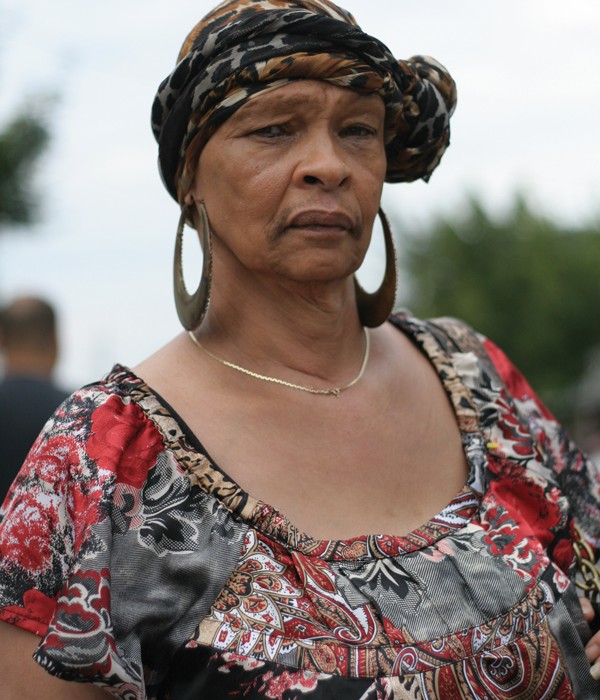
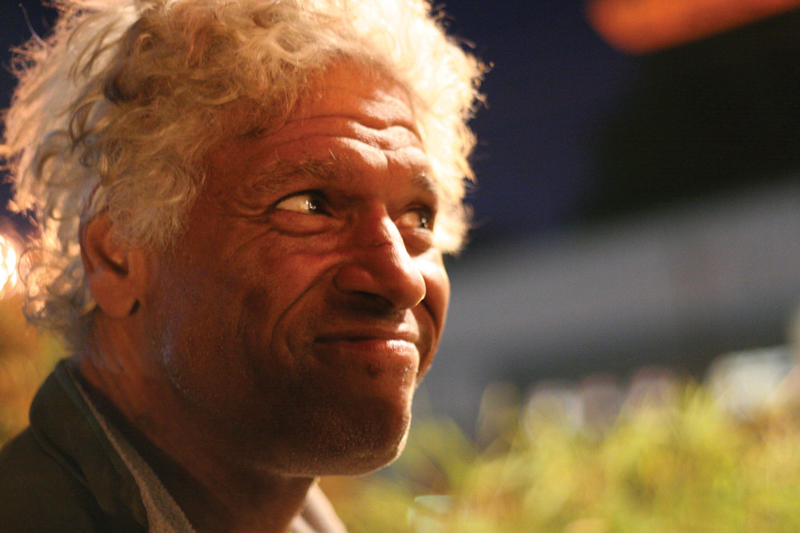
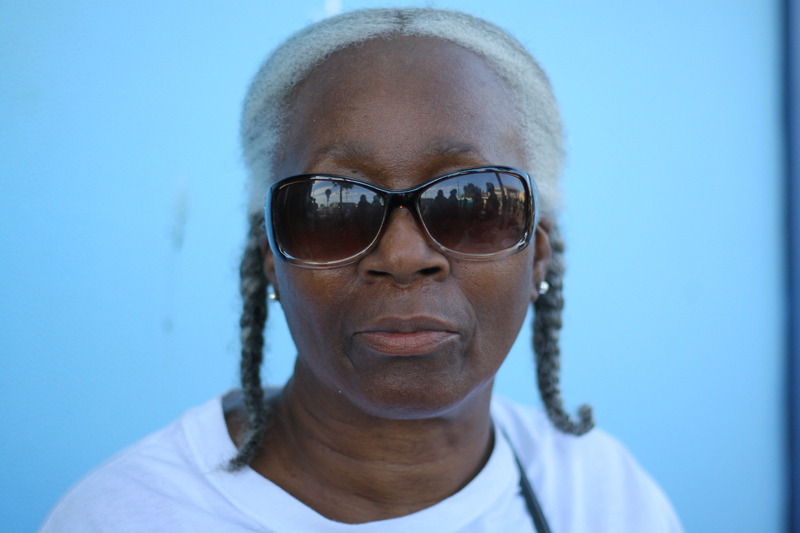
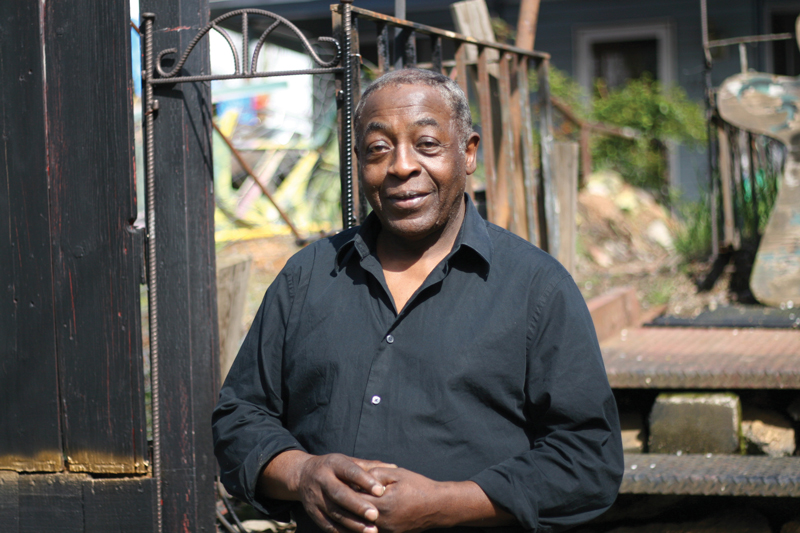
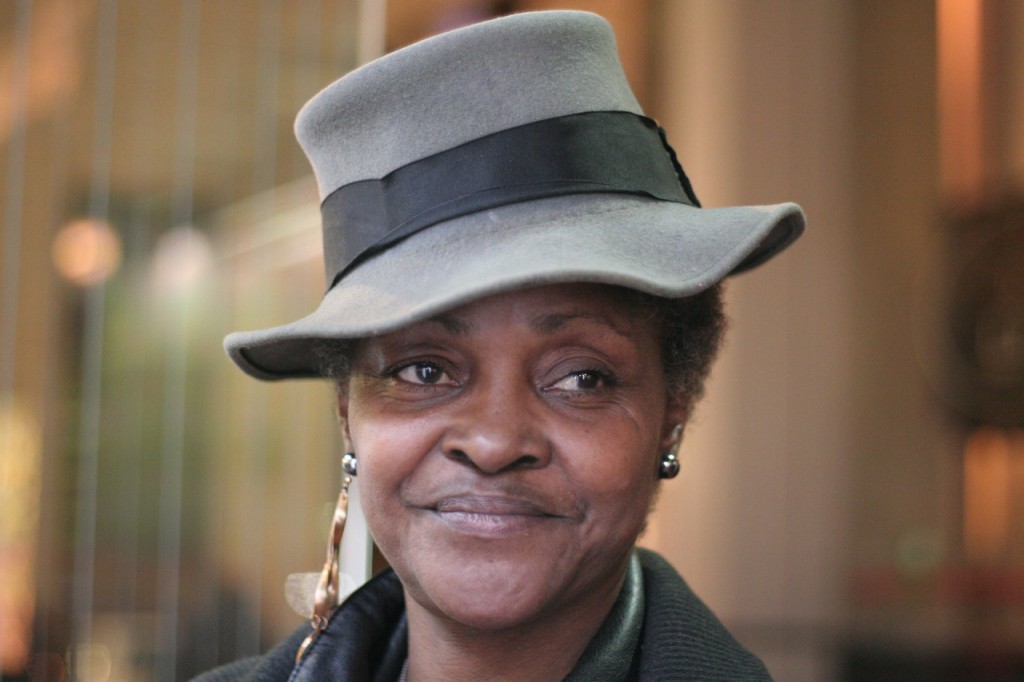
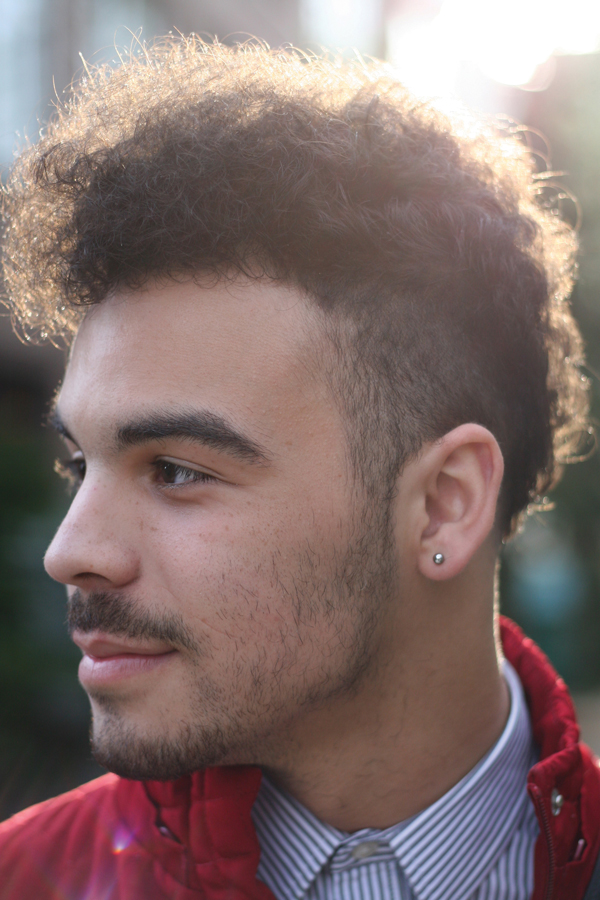
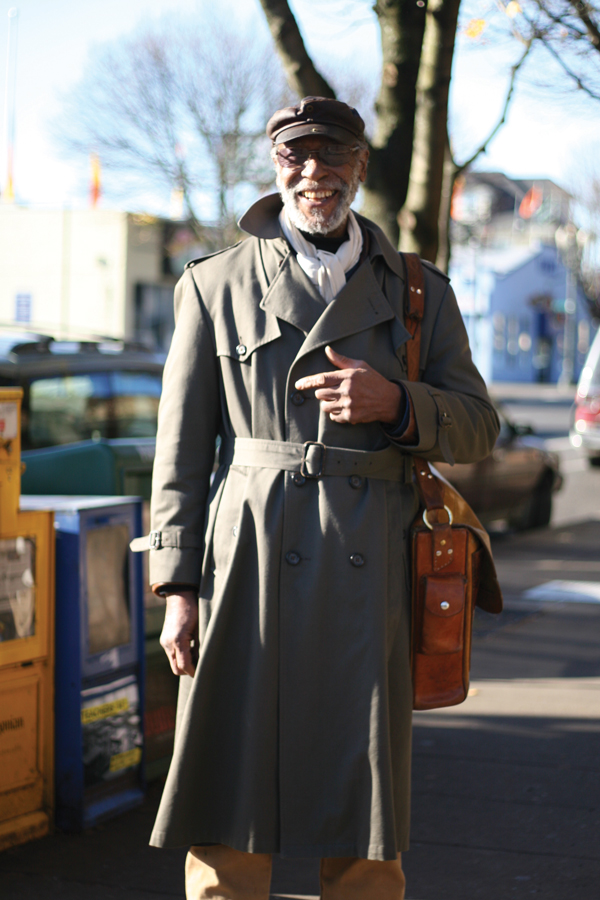
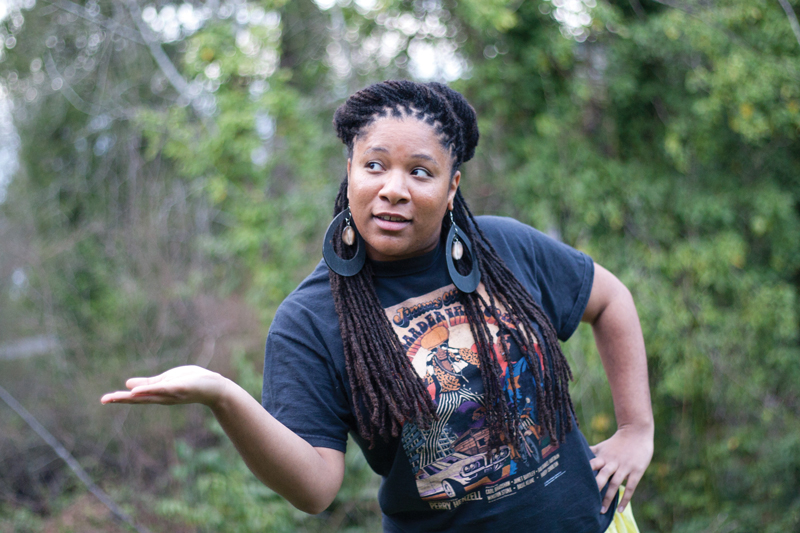
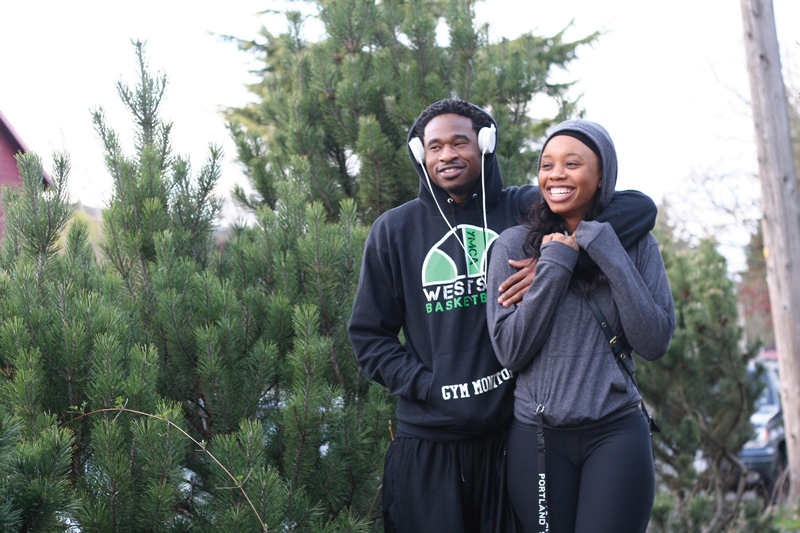
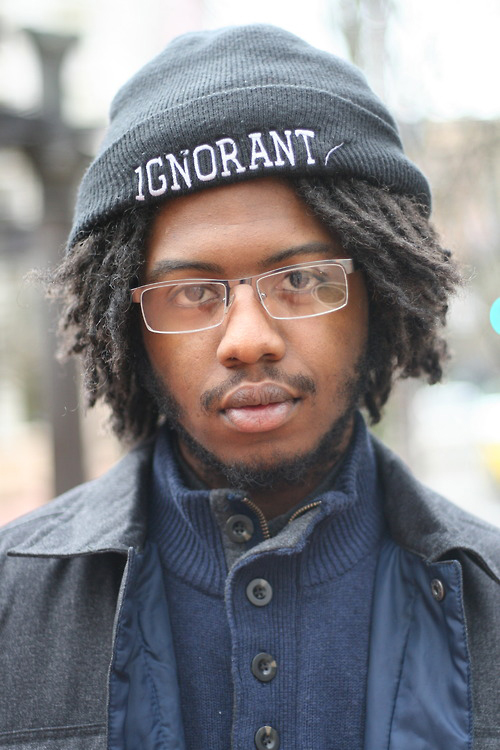
Intisar Abioto's 'The Black Portlanders' expands to all of Oregon with new partnership | PDX MagazinePDX Magazine
[…] published a collaborative narrative essay project with Abioto in its seventh issue, which can be read here. The Black Portlanders project is available to view […]